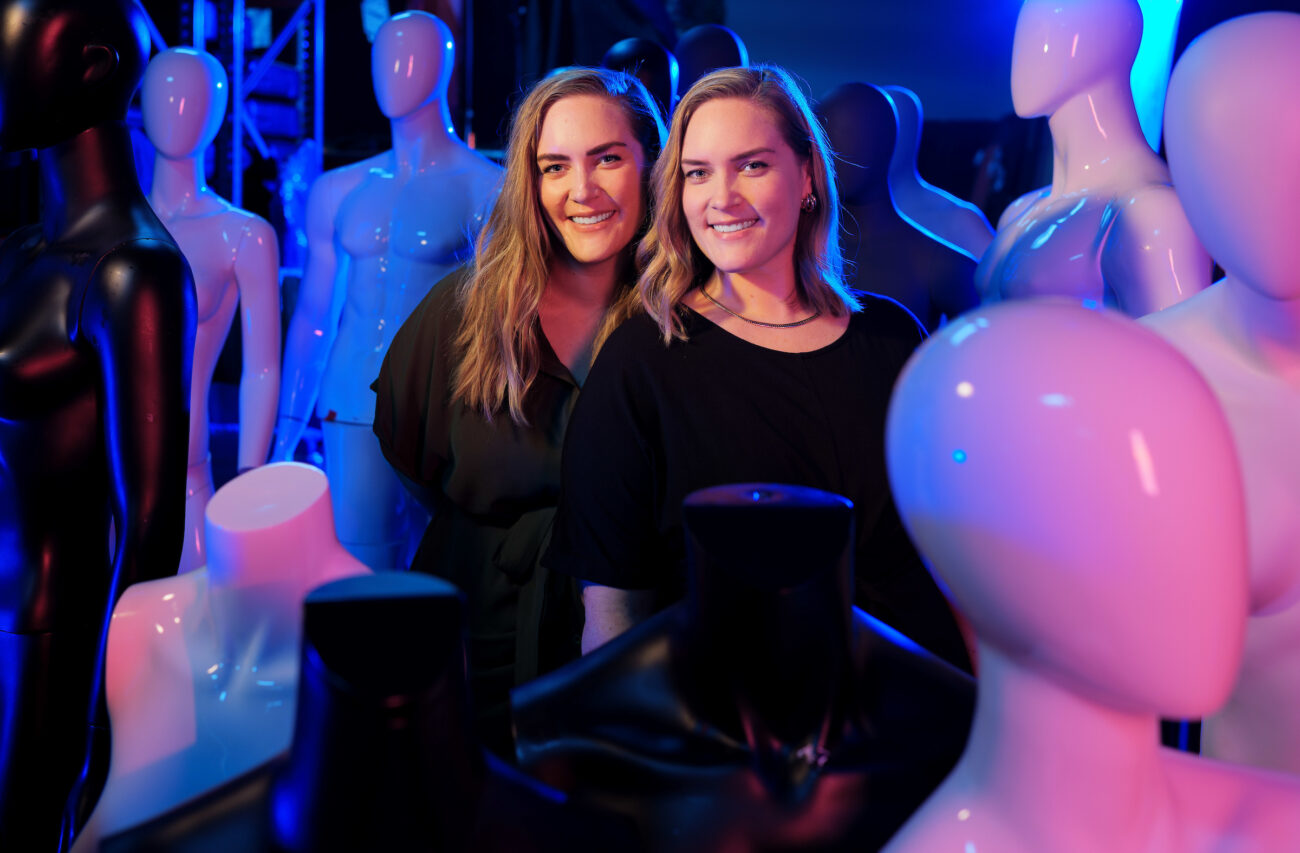Photo Essay: Not Left Behind
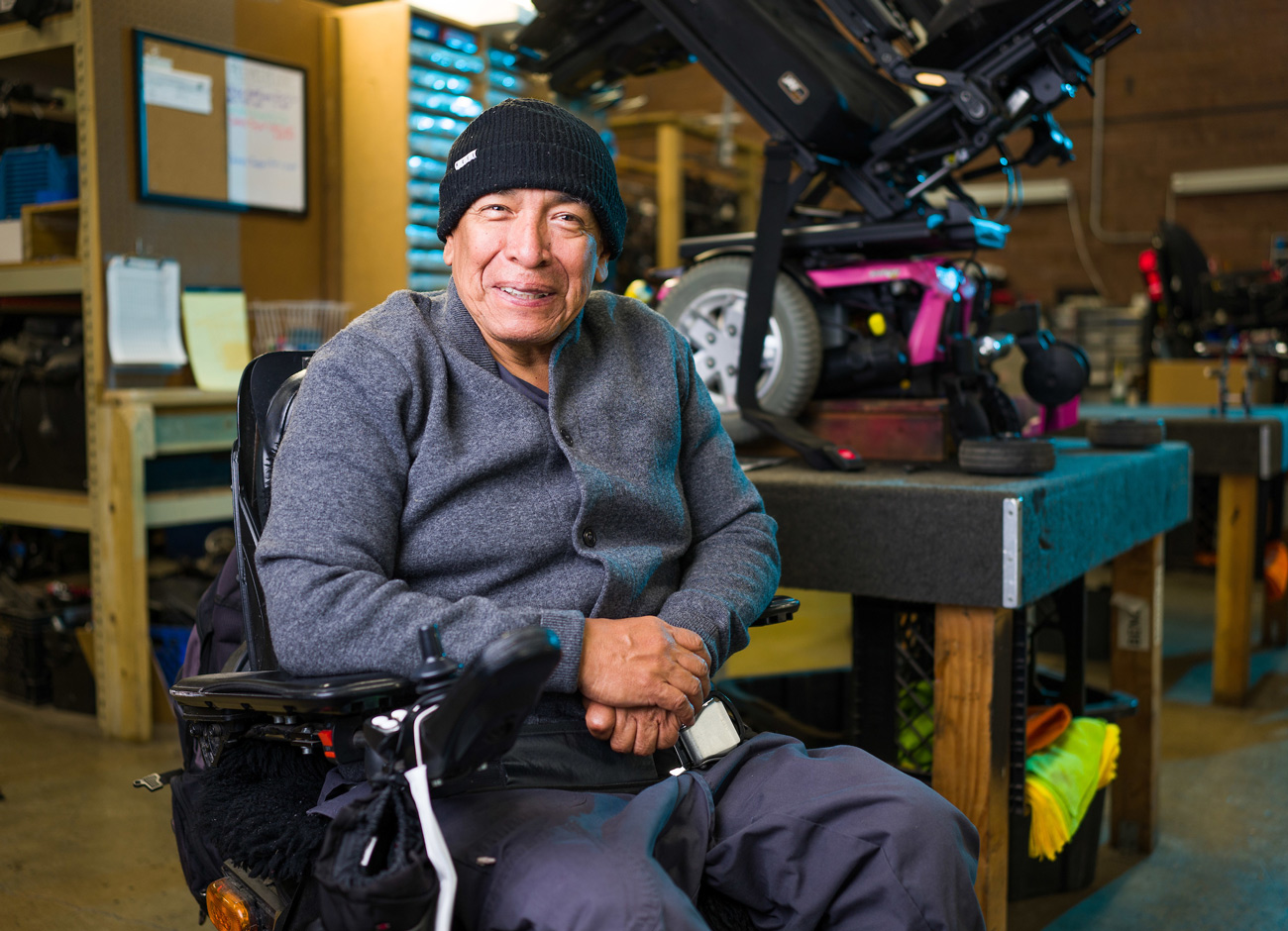
Alison Layton used to love to go on hikes.
But after she was diagnosed with juvenile idiopathic arthritis, it became impossible to keep going for long. “I’d be so exhausted,” says the teen from Kaysville, Utah. “I’d get to the point where I couldn’t do any more.”
What didn’t change was her desire to participate in a youth trip to Martin’s Cove and Rock Creek Hollow, historic sites on the Church of Jesus Christ of Latter-Day Saints’ pioneer trail in Wyoming. Typically, when youth groups go there, they walk for miles, sometimes over rough ground.
Fortunately, the Layton family knew where to go for help: the Utah Assistive Technology Program at Utah State University. The Logan location’s staff had already teamed up with volunteers Mike Stokes and Todd McGregor to engineer a way for Alison’s brother to go on bike rides. The side car they crafted meant Parker could join with his family, even though he couldn’t ride on his own.
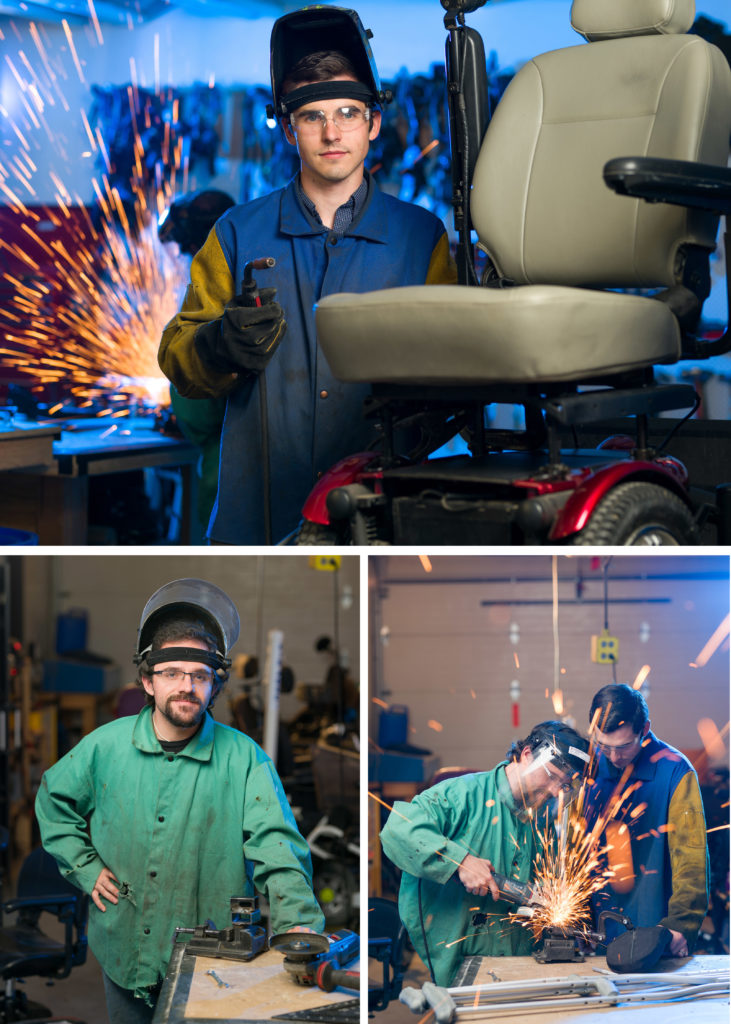
The Utah Assistive Technology Program is part of USU’s Institute for Disability Research, Policy and Practice and promotes independence in education, employment, and community settings by fabricating assistive technology devices.
UATP serves Utahns statewide. Logan’s staff members use tools, volunteers, experience, and innovation to create custom-made and affordable devices for people seeking to keep or improve their independence.
The side car has been a hit with Parker. He does not speak, but he clearly loves a bike ride. “We don’t have to ask him twice if he wants to go,” says Christopher, Parker’s dad.
So the family came to UATP in Logan hoping for another piece of custom equipment. They brought a design with them: a carrier fashioned from a camp chair, poles that suspended it, and harnesses that helped the bearers handle the weight comfortably. Dubbed the Mitch Mobile, it was the invention of a scout troop in Utah.
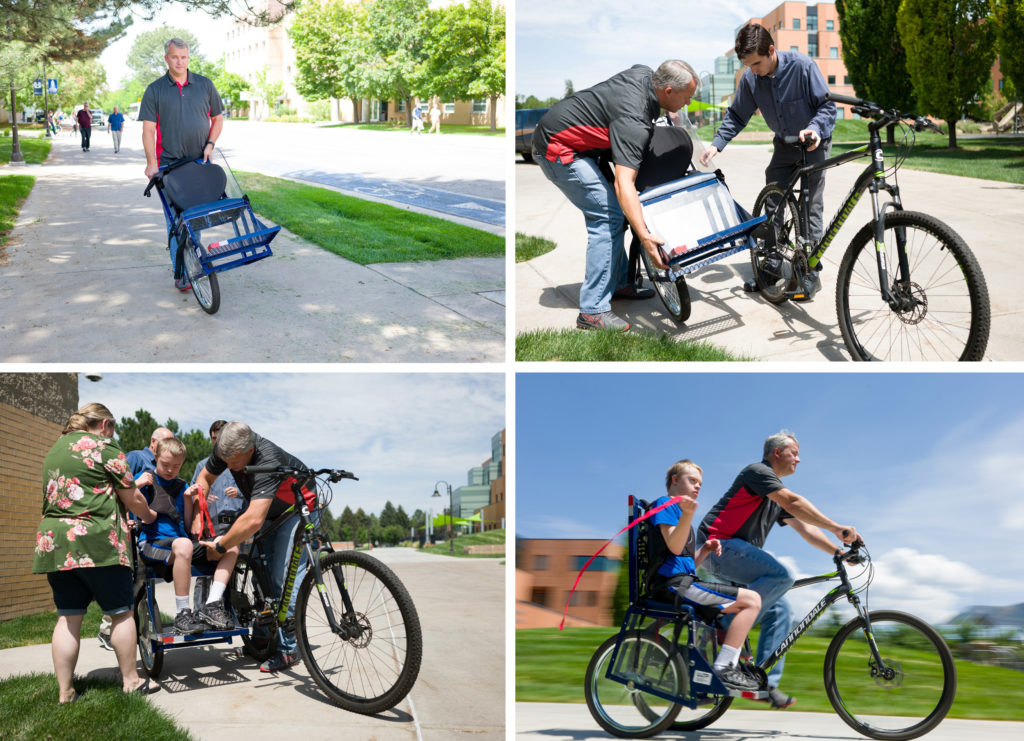
Utah Assistive Technology Program volunteers Mike Stokes and Todd McGregor engineered a way for Parker Layton to go on bike rides with his family. They developed a side car and tested it out with Parker on USU’s Logan campus.
The UATP team took the design and added some modifications. “We studied first responder stretchers for the mountains, and how their harnesses were set up, and we copied that same design for our carrier,” explains Dan O’Crowley, the Logan UATP coordinator. “The end result is it’s more comfortable for the bearer.”
The result was also much easier on the passenger than a rickshaw. Alison was able to remain seated while the carriers lifted her up or put her down. Young men carried Alison most of the time on the Wyoming trails, but women took over for the youth trek’s Women’s Pull event, and they kept going for a couple of miles after that.
It made the experience possible for Alison. “It was really cool! For once I was able to do something that I otherwise couldn’t do. It was really nice to be included. … I wasn’t left behind thinking about what everyone else was doing.”
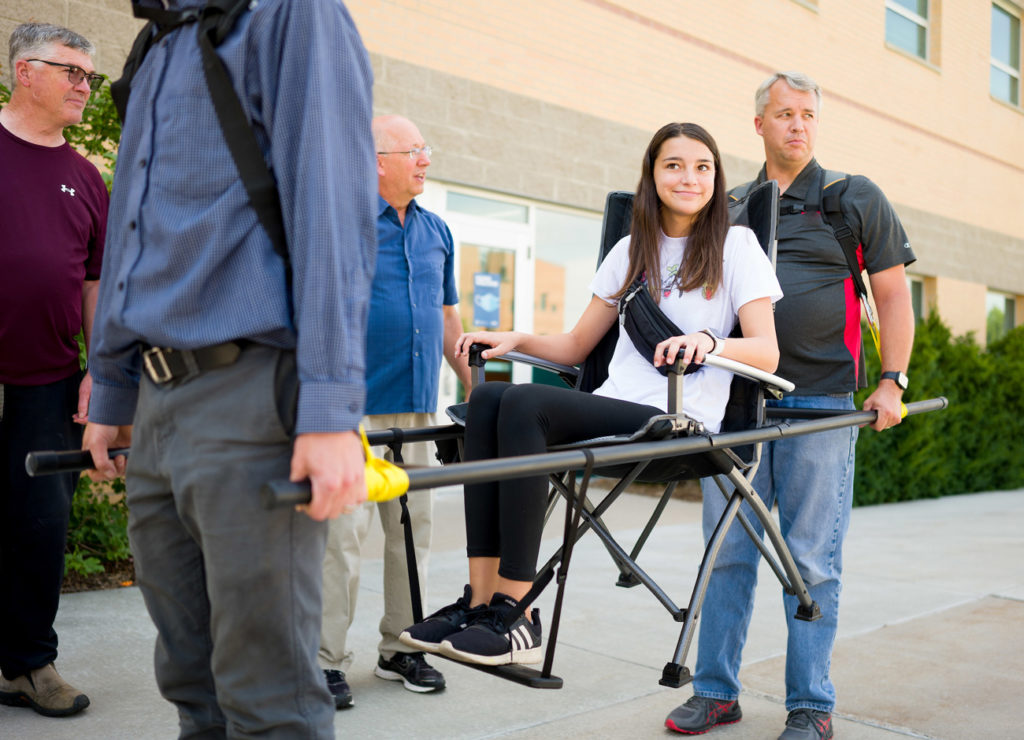
Alison Layton was diagnosed with juvenile idiopathic arthritis, which made hiking difficult. Volunteers with UATP crafted a carrier that would enable her to participate What didn’t change was her desire to participate in a youth trip to Martin’s Cove and Rock Creek Hollow, historic sites on the Church of Jesus Christ of Latter-Day Saints’ pioneer trail in Wyoming.
It is a little-known fact that hundreds of wheelchairs are abandoned in Utah every year — and that without some way to fix them up and match them to people who need them, they’d end up cluttering garages and landfills. Another fact: Many Utahns who need wheelchairs cannot get them because they are uninsured or underinsured. UATP’s locations in Logan, Vernal, and Salt Lake City solve this problem by accepting donated chairs, refurbishing them, and transferring them to people who need them for an affordable fee.
Ismael Rojas (top image) received two power wheelchairs from UATP, then volunteered for the program to pay it forward. Without his chair, he says it would be impossible to buy food, study cyber security at USU’s Tooele campus, or enjoy the local park. “It’s good to know that UATP makes it possible for people with disabilities to be able to move freely everywhere with a wheelchair. My decision to volunteer is because UATP helped me. It is a privilege for me to help with ‘a grain of sand,’ which is not much, but it makes me feel good.”
By JoLynne Lyon
Photos by Levi Sim



